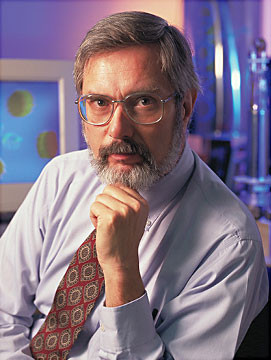James Prestegard, Ph.D. (Emeritus)
NMR Spectroscopy
The University of Georgia
Recruited: 1998
An essential part of developing any new drug is determining how that drug will bind to the protein it is targeting, a process that begins with characterizing the structures and shapes of interacting molecules. Jim Prestegard is a leader in using nuclear magnetic resonance (NMR) spectroscopy to do exactly that.
The NMR facility he oversaw for 17 years at the University of Georgia includes one of the world’s most powerful NMR tools: A 900-MHz instrument that generates atomic-level pictures of biologically important proteins, nucleic acids and carbohydrates. Knowing structural information about the interaction between proteins and potential drug candidates enables scientists to develop drugs that bind more tightly to proteins and devise faster and more effective treatments for disease.
An example: Prestegard’s lab is working to gain insight into an important immune defense molecule, lgG. Using NMR methodology, the lab seeks to understand how the addition of a single sugar to the end of the molecule’s glycans (long carbohydrates) transforms lgG from an inflammatory to an anti-inflammatory agent. Such understanding could further the use of intravenous lgG as a treatment for auto-immune disease.
Prestegard’s NMR facility is housed in UGA’s Complex Carbohydrate Research Center (CCRC), and numerous companies and other universities use the facility as well.
Research
- Developing new NMR-based methods that extend the range of applicability of NMR both in terms of the size of systems that can be studied, and the environment in which they can be studied
- Gaining new insight into membrane proteins that act as cellular gatekeepers, determining what substances — nutrients, hormones, salts and many other molecules — get into and out of cells
- Studying how carbohydrates (glycans) mediate protein interaction and cellular response
- Examining protein structure and protein-protein interaction
Choosing Georgia
Prestegard came to Georgia after 27 years at Yale University because the state, through organizations such as GRA, has been willing to invest in new technologies, and in the educational structure that assures the development of future technologies. There is real excitement in working in a community that wants to grow and is willing to make the commitment necessary to make this happen.
Intellectual Property
1

